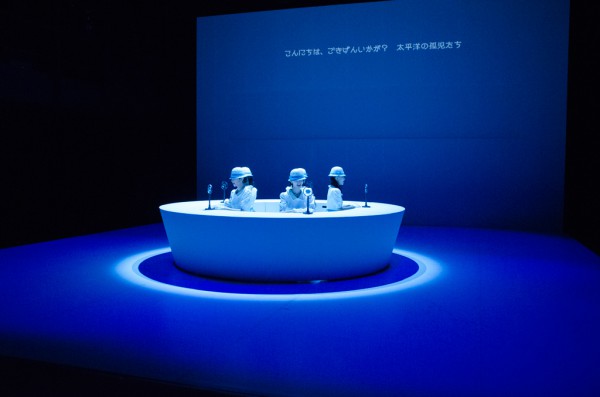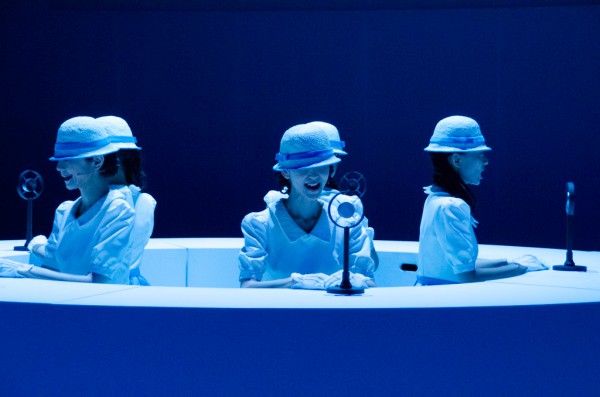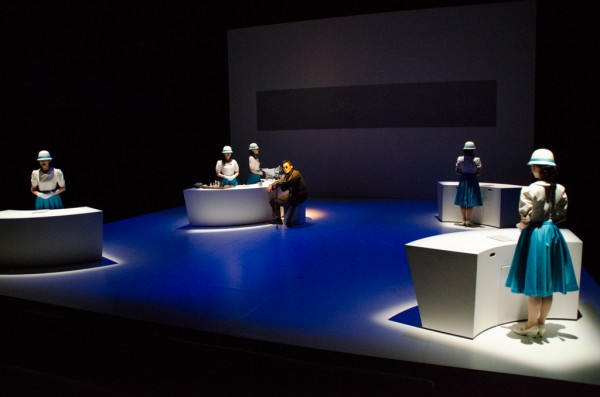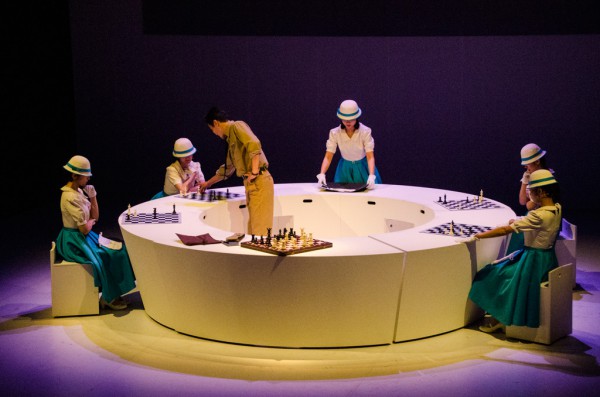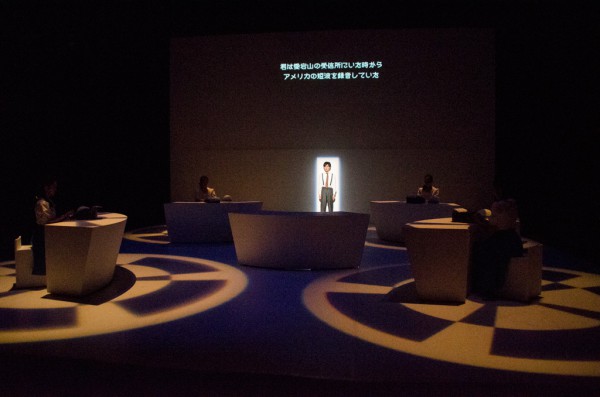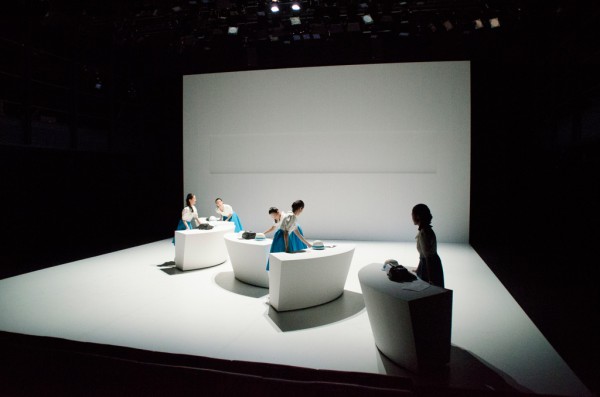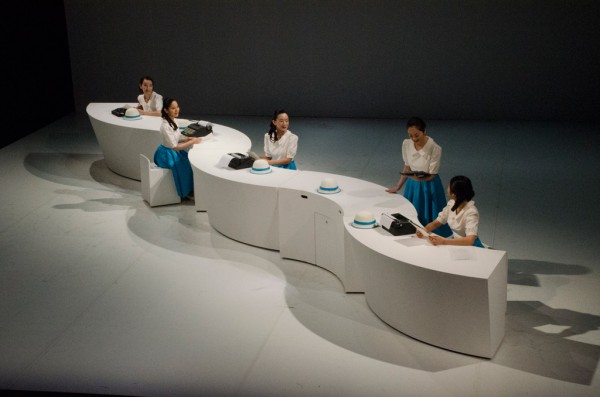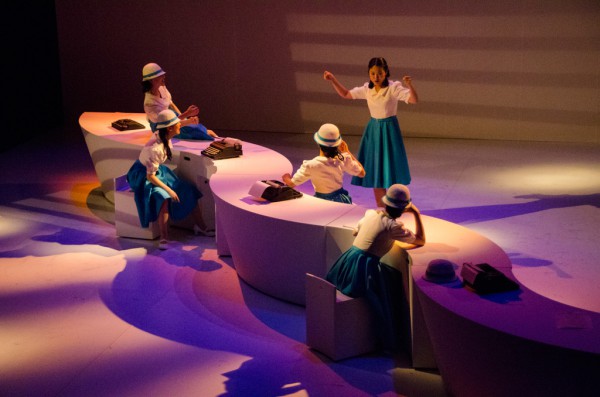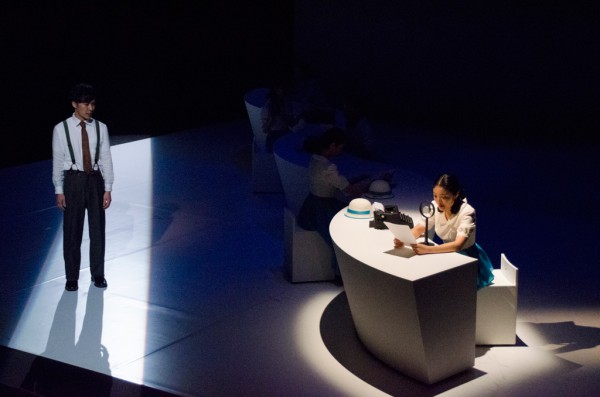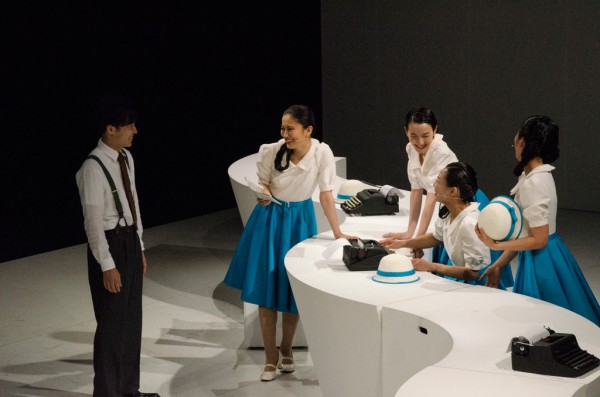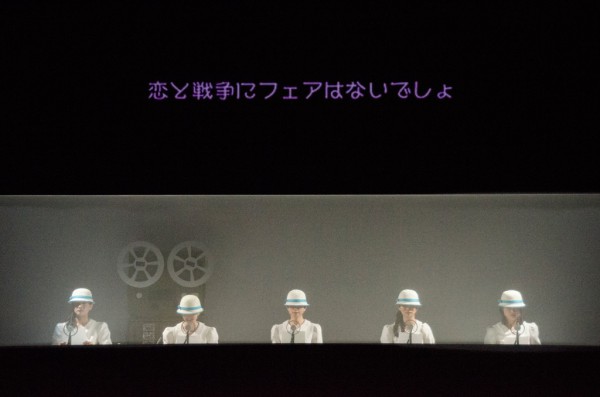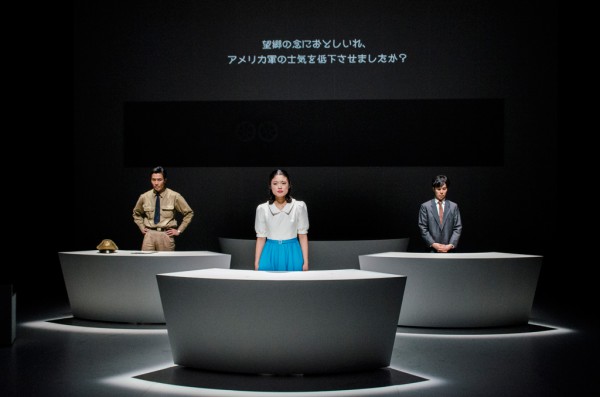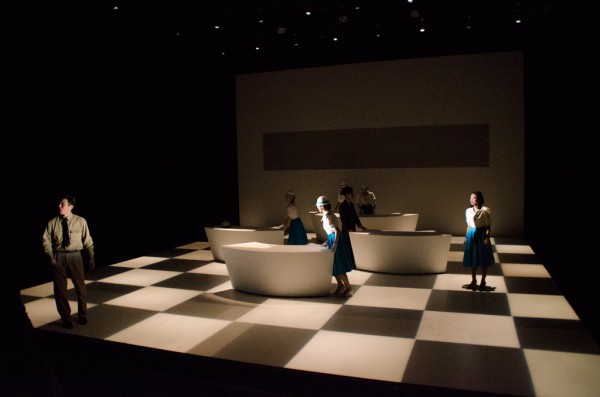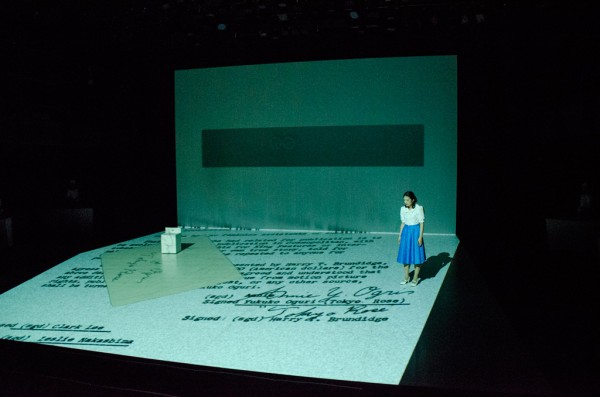主要用途: 舞台装置
クレジット: 作・演出・美術:やなぎみわ/音声デザイン:フォルマント兄弟/キャスト:松角洋平,荒尾日南子,吉田圭佑,高橋紀恵(文学座),高橋牧,小田さやか,明季
所在・会場: 神奈川芸術劇場/愛知県芸術劇場
設計期間: 2013.04-06
施工期間: 2013.06-07
会期: 神奈川芸術劇場2013.07.12-15/愛知県芸術劇場2013.08..30-09.01
写真: 木村三晴
現代美術作家のやなぎみわ氏が脚本、演出、美術を手掛ける「やなぎみわ演劇プロジェクト」の新作公演、“ゼロ・アワー -東京ローズ最後のテープ-”の舞台装置を手掛けた。日本軍が太平洋戦争中に連合国軍へ向けて行ったラジオ番組「ゼロ・アワー」。その番組に出演し「東京ローズ」と呼ばれた女性アナウンサーが主役となる舞台である。この劇中におけるアナウンサーのためのカウンターが求められた。開演時に1つのリング状の形をしていたカウンターは5等分されており、ストーリーの展開と共に演者により移動され、個人デスクやラジオブース、法廷など様々なシーンを演出する。また各カウンターには椅子を納め、引き出して使用できるようにした。劇中で幕が下りない本作において、演者がアナウンサーの女性的な所作を保ちながらカウンターや椅子をストレスなく動かせるよう、取っ手などの詳細部分の検討を行った。抽象的なオブジェとしても美しい形状を目指したカウンターは、レイアウトや照明、演技により、実際に目で見ている以上の様々な情景を観客に連想させるツールとなる。
Principle use: STAGE DEVICE
Credit: Writer Stage,director,Set designer:Miwa Yanagi / Sound designer:Formant Brothers/CAST: Yohei MATSUKDO, Hinako Arao, Keisuke Yoshida, Norie Takahashi, Maki Takahashi, Sayaka Oda ,Aki
Building site: KANAGAWA ARTS THEATRE/AICHI PREFECTURALART THEATER
Design period: 2013.04-06
Construction period: 2013.06-07
Duration: KANAGAWA ARTS THEATRE 2013.07.12-15 / AICHI PREFECTURALART THEATER 2013.08..30-09.01
We designed the set for the Miwa Yanagi Performance Project's latest production: "Zero Hour" –Tokyo Rose's Last Tape– to which contemporary art artist Miwa Yanagi contributed script, direction and artwork.The Zero Hour was a radio program broadcast during World War II by the Japanese Imperial Army to Allied troops serving in the Pacific theater. The play revolves around the character of "Tokyo Rose", the name given to the female announcers appearing on the program. We were tasked with creating the announcer desks used for the production.The opening scene shows a ring-shaped counter which is then split into five parts and rearranged to become individual desks, radio booths or court benches according to the developments in the narrative in subsequent scenes. Moreover, each counter houses a seat that can be pulled out when in use. Since the curtain never falls during the play, we paid close attention to minute portions of the desk, such as the handles, to allow actresses to move the counters and seats effortlessly while preserving the feminine demeanor of a broadcaster.The counters appear as abstract art objects intended to be aesthetically pleasant, which along with layout, lighting and performance, serve as tools suggesting various settings to the spectator beyond what is actually perceived by the eye.
